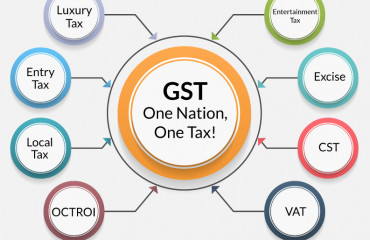
In the past three years, states have been stressed with their finances—first due to the pandemic and then due to worries over the phaseout of the Centre’s compensation for possible losses from a switch to goods and services tax (GST). However, economic revival has helped states’ finances improve since then. Stable GST collections may also ensure—finally—modest growth in revenue collection this year. Alongside, much touted capital expenditure plans are finally expected to take off, albeit with some help from the Centre. Here’s what states’ finances are looking like, in five charts:
In the past three years, states have been stressed with their finances—first due to the pandemic and then due to worries over the phaseout of the Centre's compensation for possible losses from a switch to goods and services tax (GST). However, economic revival has helped states' finances improve since then. Stable GST collections may also ensure—finally—modest growth in revenue collection this year. Alongside, much touted capital expenditure plans are finally expected to take off, albeit with some help from the Centre. Here's what states' finances are looking like, in five charts:
1. Capex, finally
The pandemic is over, and the Indian economy has shrugged off its impact. But with the global slowdown throwing up a new set of challenges, a public sector push is still vital. The Centre has been doing its part, by ramping up capital spending. States, with limited space for fiscal expansion after the pandemic, had been lagging. This, however, seems to be changing in the current financial year. For the first time in three years, states have together aimed for a similar level of capex as the Centre. The Centre's budgeted capex amounts to 2.9% of GDP, while states' is 2.8%, up from 2.1% in 2022-23, showed an analysis by Emkay Global. However, if the figures hold, states' combined capex would still fall short of the pre-pandemic trend of regularly exceeding the Centre. Capital spending by state governments is more important as their multiplier effect is said to be higher on the economy.
2. Early birds
While states have collectively stepped up planning for capital expenditure in their Budgets, some have had an unimpressive start. Of the top 15 states by capital expenditure in April-May, 11 have spent a greater share of the full year's budgeted amount than the corresponding period last year. Andhra Pradesh leads the charts, having spent 29.7% of its budget in just two months, up from 3.2% last year. Telangana and Haryana have spent 18.1% and 13.7%, respectively. (The ideal mark after two months would be 16.7% of the full-year budget, though there's enough time for the pace to pick up.) Maharashtra and Uttar Pradesh are among the ones with lowest spending so far. The Centre, meanwhile, has spent 16.8% of its full-year budget in the first two months. In June, it had also released an advance instalment of tax devolution for the states, which may encourage them to front-load their capex plans, economists said.
3. Eye on revenue
Two years after tensions between the Centre and the states over dwindling finances, states are finally expected to manage a modest revenue growth this financial year. The total revenue of the 18 states with the biggest economies is expected to grow 6-8% in 2023-24, an analysis by Crisil Ratings shows. While state finances will see some impact from the end of the guaranteed compensation regime under GST, the indirect tax mop-up is still likely to help them grow revenues at a faster pace than other streams. However, there are risks. The volatile global economic outlook and its impact on export-linked sectors threatens to negatively impact states' revenue projections, Crisil said. The 25% share that states are to get in the Centre's tax revenue will also be key. The Centre's gross tax collection in April-May has been 1.6% lower year-on-year mainly on account of lower corporate tax mop-up but will most likely improve in coming months.
4. Fiscal balance
The improvement in revenues after the first pandemic year has helped both the Centre and states return to the path of fiscal consolidation. An analysis by Icra for 24 states showed that their combined fiscal deficit had come down to 2.6% of their combined gross state domestic product, the lowest since 2019-20. However, the fiscal deficit figures differ for each state. In the Union Budget, Finance Minister Nirmala Sitharaman had announced that states would be allowed a fiscal deficit of 3.5% of their individual GSDP, with an additional 0.5% contingent on them undertaking power sector reforms. Among the 10 biggest state economies, Madhya Pradesh and Rajasthan are the only ones that have planned to exhaust the full 4% target. Both these states have shown interest in power sector reforms. However, states tend to embark upon fiscal consolidation by cutting capex, a trend over which economists have expressed worry as it could prove counterproductive to growth.
5. GST trends
After six years of the new indirect tax regime, GST collections are emerging as a reliable source of revenue for the government. This form of tax revenue has a 3.2% share in GDP, higher than all other major tax heads. However, GST collections, which are basically a tax on consumption, reveal deep state-wise disparity. Five states—Maharashtra, Karnataka, Gujarat, Tamil Nadu, and Uttar Pradesh—account for over 50% of the states' collections. While high population would play a role in boosting collections, a huge divergence also comes from per capita income and the types of goods and services consumed in different states, economists said. The share of Maharashtra, the state that earns the most in GST, has risen to 21.6% of all states' mop-up from 20.6% last year, while Gujarat's has dropped from 8.7% to 8.3%. The shares for most other states have been largely unchanged.
